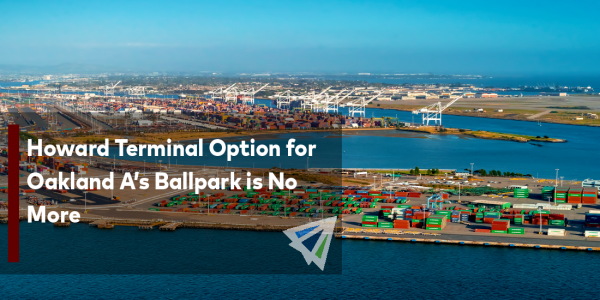Competitive Edge
May 3rd, 2023

SPECIAL UPDATE: A few carriers have backed off from a May 1st implementation date for transpacific general rate increases (GRIs) and have extended present rates valid until May 14th.
Many other carriers still intend to issue increases this month, however. If you have any questions and would like to know which ones will be raising rates, please reach out to our team today!
IMPORT: Asia to North America (TPEB)
Recent Developments:
• General rate increases (GRIs) are heating up in the transpacific, however some are skeptical on how long carriers can keep rates high through these means.
•West Coast contract negotiations (between the International Longshore and Warehouse Union (ILWU) and Pacific Maritime Association (PMA)) remain active. The existing labor contract between the two parties expired July 1, 2022.
For more on the West Coast labor talks, consider signing up for our Interlog Insights newsletter! Last month, our team of experts dissected recent developments around this pressing issue for international shipping.
Rates: Carrier-imposed increases have lifted rates up, but with demand still low, it’s uncertain how long they’ll stick.
Space: Space is open.
Capacity: Open but expect carrier maintenance in the form of blank sailings and slow steaming.
Equipment: Available at virtually all inland and coastal points. Chassis access can still pose demurrage headaches for intermodal shippers, however.
TIPS:
• If you have ready cargo, consider the potential cost savings of booking ahead of future GRIs. Market trends indicate more increases are to come.
• Hold your logistics partners accountable on frequent updates regarding blank sailings, rate increases or any other carrier tactics.
IMPORT: Europe to North America (TAWB)
Rates: Rates continue to fall and, depending on the origin and routing, can vary vastly in price.
Space: Space is open.
Capacity: Capacity is open.
Equipment: Availability on both origin and destination sides, unless advised otherwise.
TIPS:
• Book at least three weeks prior to ready date.
• Premium add-ons (i.e., no-roll options and improved cargo reliability) remain assurances shippers should add to the tab with transatlantic service.
EXPORT: North America to Asia
Recent Developments:
•This outbound side has been impacted by a dormant import market, particularly on the West Coast. Top export hubs, like Oakland and Seattle, have cut down on dockworker shifts putting a strain on outbound flow.
Rates: Rates are low and level.
Space: Space is wide open.
Capacity: Capacity is widely available for all services.
Equipment: Availability at virtually all inland points and seaports. However, chassis, like for importers, can pose challenges for intermodal movement.
TIPS:
• Book at least two weeks prior to the time of departure.
• Shippers with high volume projects should take advantage of carrier receptiveness to take on these opportunities. Space is wide open with a high acceptance rate.
• Pay attention to how carrier maintenance in the transpacific may affect the export market.

InterlogUSA Proudly Presents...
FreightFM Episode 8
Check out our latest episode where Interlog’s Marketing Manager, Rachel Thielen, discusses the impact blank sailings and slow steaming have on the market.
Did You Know: Vessel Reliability in March Improves as Cargo Volumes Continue to Decline
Global schedule reliability increased by 2.4 percentage points up to 62.6 percent month-over-month and was 26.8 percentage points higher compared to March last year – data compiled by Sea-Intelligence shows.
This is largely due to the lack of various supply chain bottlenecks throughout 2021-2022 that contributed to rocky scheduled reliability during that time.
Source: JOC
Freight News
Manufacturing Industry Sees Moderate Gains for Production Levels and Customer Demand
S&P Global’s Purchasing Managers’ Index (PMI) – which measures the change in production levels throughout the U.S. economy from month to month – saw growth for the first time since October 2022, at 50.2, yet some economists still remain unsure about the future.
Furthermore, this April PMI is up from 49.2 in March and closely in line with the prior released ‘flash’ estimate of 50.4, S&P Global noted in their press release.
Additionally manufacturers’ output improved over the past month which was due to an increase in new orders, after six months of contraction, data shows.
The press release also detailed that the improvement in demand was limited to the domestic market, as new export orders contracted for an eleventh consecutive month.
Gulf Coast Ports Show Mixed Results for March
Ports out on the Gulf coast saw mixed results during March… let’s break it down.
Port Houston: Total container volume at the port decreased by three percent year-over-year in March. However, the port’s executive director says they continue to have a strong export market in Houston that is offsetting the softening of import demand.
Port of Corpus Christi: The port saw a fourteen percent year-over-year increase in total cargo (17.5 million tons) in the month of March. This increase was largely due to exports of crude oil, petroleum and liquid bulk cargo.
Port of New Orleans: The port saw an increase of four percent year-over-year in March but saw a 38 percent year-over-year decline in total breakbulk tonnage during the month.
Check Out Last Month's Webinar!
Topics:
- GRIs
- Blank Sailings
- Labor Talks on the USWC
- Market Updates
- Q&A
Sign Up For Our May Webinar!
Our next webinar is on Wednesday, May 17th at 11AM CST!
We will announce topics in the coming weeks. If you have any questions or topics you would like our experts to discuss in future webinars, please let us know.
Interlog  Insights
Insights
Last week we recapped our April Interlog Insights – you can view weeks 1-4 of April’s insights here.
Sign up today so you can exclusively view our May week one edition going out this Friday morning.
Sign up for our
industry answers
Our team works to provide valuable, unique, and relevant content to assist you in finding solutions. Sign up now.

